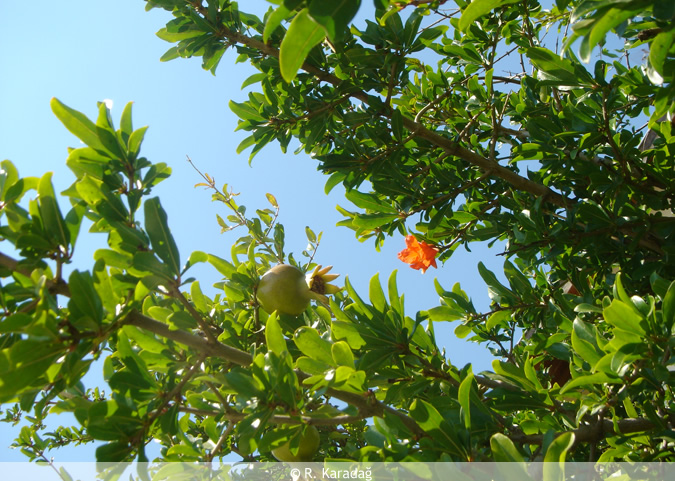This thorny tree can reach to 18 feet in height and has four-sided twigs and shiny lancet-shaped leaves and bright red flowers that develop into a fruit with many seeds and a yellow to red skin, the pomegranate itself. Distribution: The pomegranate is native to Southwestern Asia from India and Pakistan to Iran . It is cultivated in the entire Mediterranean area and in Asia as far as China , growing wild now in many regions. Material used for dyeing: Fresh or dried peel of the fruit.Historical Data
The pomegranate was already known to the ancient Egyptians and is mentioned several times in the Old Testament. Adam picked a pomegranate for Eve (with fateful results, we know); the prize Paris awarded Aphrodite was a pomegranate. Malum punicum, Punic apple, was a name used by the Romans, who learned of it from the Phoenicians in North Africa , or also Malum granatum, because of its many seeds, which made it a symbol of fertility. Apples and flowers were often motifs in Islamic and Buddhist art. The city of Granada in Spain and the semi-precious stone, the garnet, also derive their names from the pomegranate.

